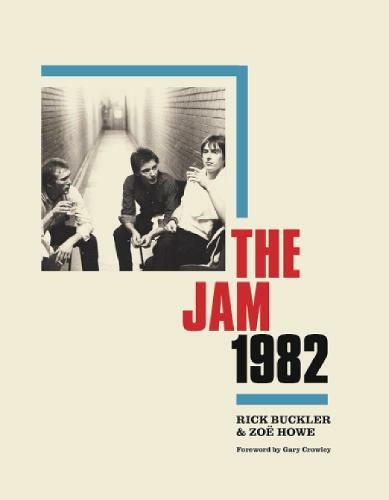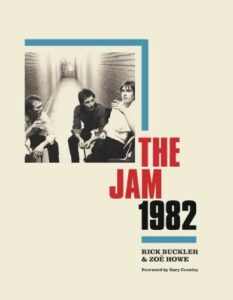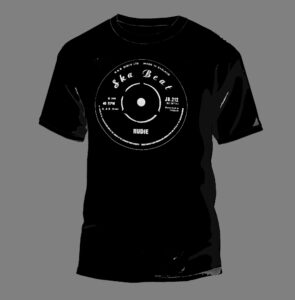Ben Sherman is Dead
June 11, 2012
The iconic British clothing brand is officially dead to many loyal fans.
Founded in 1963 by Arthur Benjamin Sugarman, Ben Sherman was an originator of the mod look and a legendary lifestyle brand that became an international sensation for impeccably tailored shirts and suits.
Ben Sherman was murdered by a new corporate structure that didn’t stay true to its roots and completely disregarded his loyal following. While trying to boost sales and increase market share by appealing to a broader audience, Ben Sherman’s new marketing tactics led to his ultimate demise.
His health started to fail when the women’s line was discontinued and subsequently restyled shirts, clothing and accessories were introduced without any trace of Ben’s original clean-cut, mod identity. The final nail in the coffin was the “Plectrum Sessions” – featuring un-kept, unfashionable hippie and hipster bands- exactly the opposite of his original style.
He is survived by betrayed loyal fans worldwide, especially mods and skinheads who will miss the classic, clean-cut styles that have been replaced by fickle hippie and hipster fads. Restoration of the lifestyle brand seems hopeless. Based in London, UK; Ben Sherman was 49 years old.
Chelsea Hawkins
IT’S A MOD, MOD WORLD
London Mods 1960’s
Pan Philippou, CEO of Ben Sherman, reflects on the company’s heritage and plans for a brilliant future.
By Randi Gollin
How does an iconic brand get its groove back? That was one of the key conundrums facing mover and shaker Pan Philippou when he took the reins as CEO of Ben Sherman in January 2010. A British company with staying power Ben Sherman was founded in 1963 by Arthur Benjamin Sugarman, a shirtmaker who seized the mod moment and ran with it, creating London-look button-downs that struck a chord with bands like The Who , The Rolling Stones and The Kinks, becoming a vibrant emblem of youth culture. “It was post-war — you think of the revolution, The Beatles, all that. And this brand comes around,” says Philippou during a recent interview at the company’s midtown Manhattan showroom. “He took the shirt to another level. The button-down collar, the button at the back, all the colors, the fabrications, and people were just used to wearing white shirts. Now they were wearing colored shirts. It was a bit of the anti of the shirt in many respects,” he says. (It might be said that Philippou, too, takes the radical approach, dressed in a black T-shirt and jeans rather a Ben Sherman button-down.)
“I was born in the ’60s,” he continues. “I remember, if you had a Ben Sherman, in the ’70s, you were like the crème de la crème — if you had a Ben Sherman, certainly you’d get a bird.”
Over the decades, Ben Sherman continued to outfit musicians like The Clash, The Jam, Blur, Oasis and Moby and it also captured the hip peacock’s fancy with its kaleidoscope of eye-catching hues and patterns. “There are stories around Ben Sherman, there’s sincerity, there’s heritage,” he explains. But as this pioneering label, which turns 50 years old in 2013, expanded its reach into women’s clothing and beyond, it also morphed into a business with an unwieldy number of categories and licensees and its vision got, well, a tad murky. The name, Philippou notes, seemed to carry more weight than the goods bearing its label.
Plectrum Collection
Approachable, funny and candid, with impressive business chops to boot, this Londoner knows a thing or two about redefining a brand and maximizing its potential. Prior to joining Ben Sherman, Philippou headed up the privately held World Design & Trade Co. for four years, where he restructured the prominent UK streetwear brands Firetrap, Full Circle and Sonnetti. His gig before that: leading the charge at Diesel, from 1995 to 2007, where he started as finance director and was swiftly promoted to CEO. “I was like a duck to water,” he says, recalling his transition from numbers man to the style side of the fence. “I just really enjoyed the whole fashion thing. I was probably living that life, at the weekend, parties, dressing up a bit, and it was just an extension of that, so it became a blur of happiness. I didn’t know anything about markets but it was really just the intuition, the feel of the market, the distribution, understanding the customer. I loved being a connoisseur, understanding what was cool and what wasn’t cool and that made it all sort of relevant to the brand.”
Diesel, of course, went on to become “best in the class in the UK” and at the end of 2003, its owner, Renzo Rosso, dispatched Philippou, a born fashion-maven, to the States to reposition the brand.
This look could be based on 1930’s Bolshevik, or perhaps just the local jumble sale
Philippou’s laser-beam focus has come to the fore once again in his current post. Once onboard, he and his team took stock of every detail, from the branding strategy and the very definition of the Ben Sherman customer to its own store concepts, which have been repositioned and will soon be launched in the UK.
As the reshaping got underway, it became apparent that a return to the company’s core business was imperative if Ben Sherman was to move ahead. “We had to say first and foremost we’re a shirt company. And that got lost along the way; we developed into a lifestyle brand. So we spent a lot of time rekindling. We had some people who had come on board, help design the shirts further, looking at supply chain to see where we could start to innovate a little bit more,” says Philippou. “Now we’re trying to get back with the Ben Sherman button-down shirt. We need to make sure that the staple is always there so we can build on that and build around that.”
In an effort to streamline the myriad licenses, accessories, for instance, have been brought back in house, and placed in the hands of a Fred Perry alum. This September, Ben Sherman will launch a fragrance through Nordstrom’s — not exactly a new foray, but a better-positioned, more professional undertaking. And as many a bird can tell you, women’s clothing has flown the coop. “It’s a market based on trends, as opposed to brands. Women are very fickle. They’ll wear leggings one season, denim another and we just couldn’t compete in that marketplace where there’s a massive turnaround for looks,” he says.
Admittedly, the fashionable guy is also capricious, but Philippou has found that as a customer, he’s “more dedicated to a brand. It’s more of a case of I’m part of that tribe, I’ve gone for Ben Sherman, therefore this is my DNA, this is what I subscribe to, this is the music I like, this is where I hang out.”
Back in Sugarman’s day, that mod guy wearing a Ben Sherman shirt would have hopped on his scooter, dressed in his parka, and zipped down to Brighton. Not so, today’s modernist customer, a fashion lover who’s 25 to 45, professional, educated and makes an above-average income. “He’d maybe take a flight to Miami, maybe take a flight to Ibizia, with his iPad; he’d be really techno savvy. He wouldn’t be bringing some girl on a scooter to Brighton. He’s listening to things like Plan B and Mos Def,” muses Philippou.
And he might also opt for one of the brand’s more premium segments — the on-trend Plectrum collection, or the higher-end Modern Classics, which incorporates slim-fit shirts and jackets with a hint of British attitude.
“We’re really trying to make a brand these last 12 months all relevant to 2011, while at the same time, keeping the heritage there,” Philippou says. “We call ourselves the heritage of modernism. We want to be applicable to the modern guy — the mod guy of 2011.”









